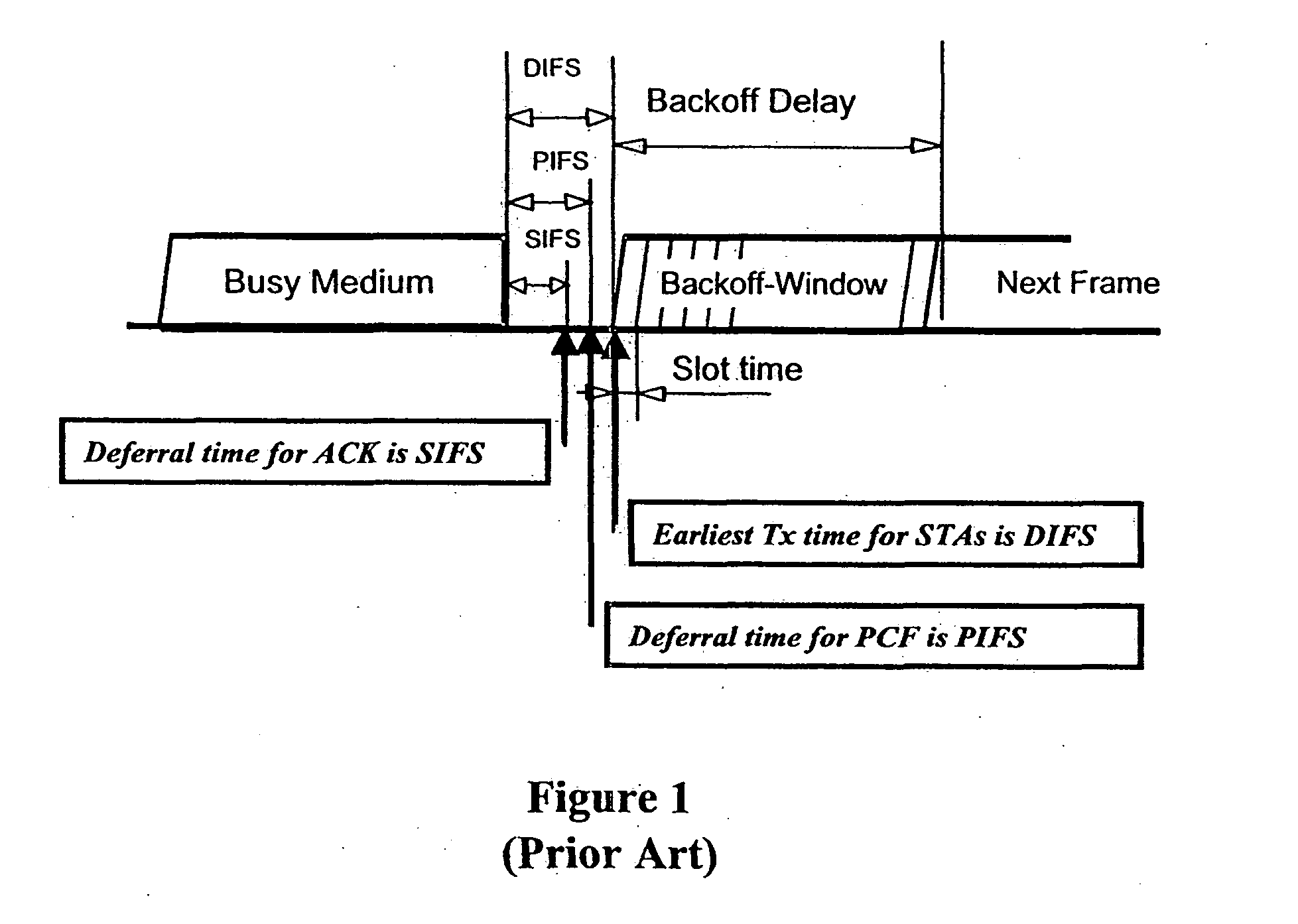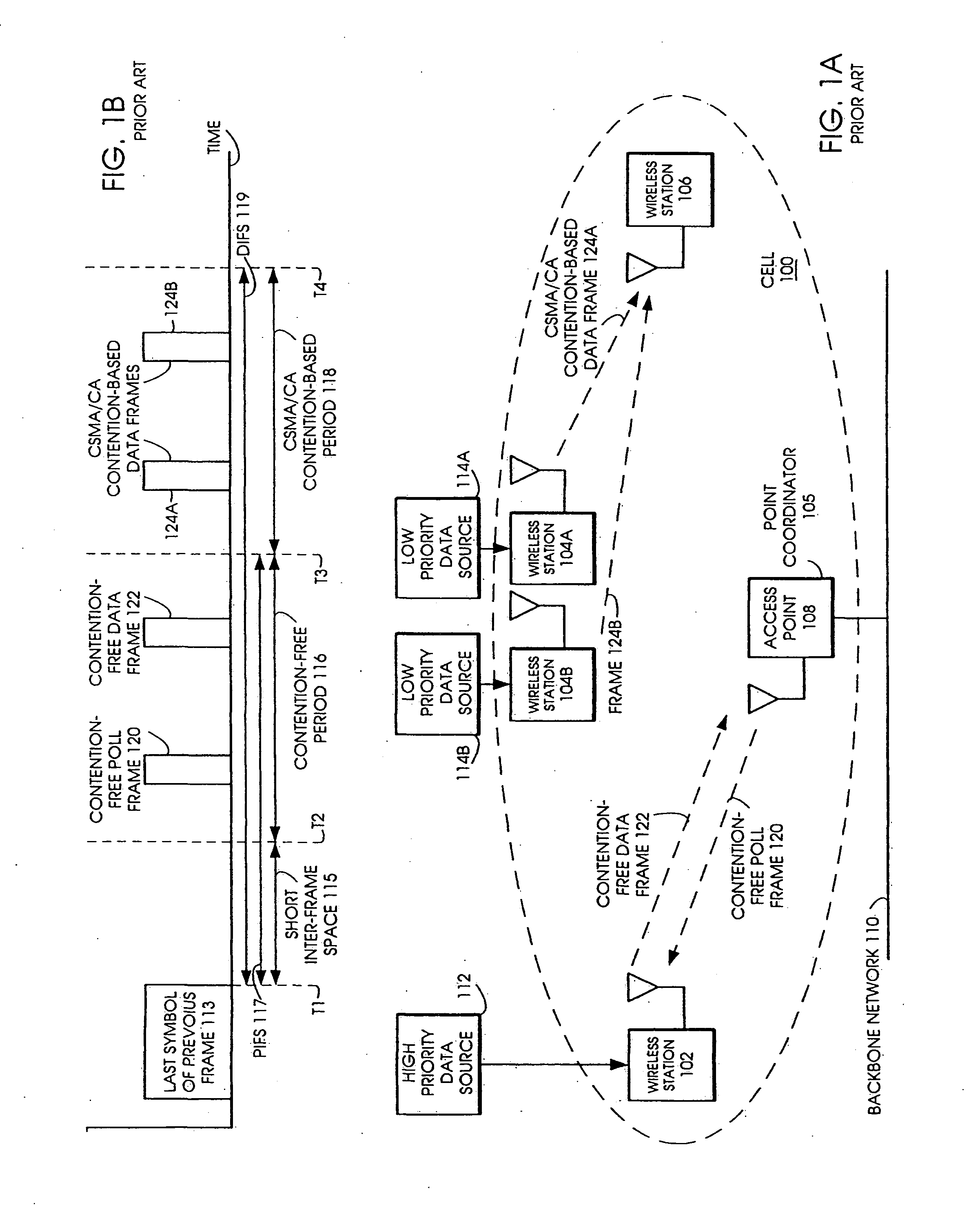Tiered contention multiple access (TCMA): a method for priority-based shared channel access
a shared channel access and contention multiple technology, applied in the field of telecommunication methods, can solve the problems of preventing back-to-back re-transmission, protocol instability, and hidden terminal problems, so as to reduce the chance of collisions and reduce delays
- Summary
- Abstract
- Description
- Claims
- Application Information
AI Technical Summary
Benefits of technology
Problems solved by technology
Method used
Image
Examples
Embodiment Construction
[0112]FIG. 2A is a network diagram of a single-cell wireless LAN 200, operating with the Tiered Contention Multiple Access (TCMA) protocol, in accordance with the invention. The single-cell wireless LAN 200 provides connectivity within radio range between wireless stations 202, 204A, 204B, 206, and 208. Access point 208 is a wireless station that allows connections via the backbone network 210 to wired network-based resources, such as servers. Station 204A is supplied with data from a file transfer data source 214A, which has a lower QoS priority QoS(A). Non-real-time applications such as file transfer, Email, and data backup can tolerate greater delay. Station 204B is supplied with voice and video data from data source 214B, which has a higher QoS priority QoS(B). Voice and video applications have the most rigorous delay and loss requirements.
[0113] Before transmitting a frame, the medium access control (MAC) layer must first gain access to the network. FIG. 2B shows three interfr...
PUM
 Login to View More
Login to View More Abstract
Description
Claims
Application Information
 Login to View More
Login to View More - R&D
- Intellectual Property
- Life Sciences
- Materials
- Tech Scout
- Unparalleled Data Quality
- Higher Quality Content
- 60% Fewer Hallucinations
Browse by: Latest US Patents, China's latest patents, Technical Efficacy Thesaurus, Application Domain, Technology Topic, Popular Technical Reports.
© 2025 PatSnap. All rights reserved.Legal|Privacy policy|Modern Slavery Act Transparency Statement|Sitemap|About US| Contact US: help@patsnap.com



